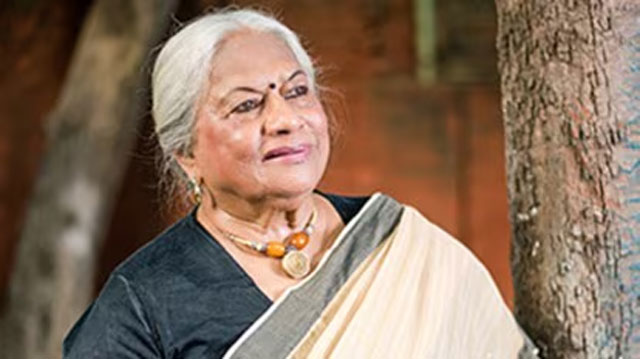Daijiworld Media Network - Ahmedabad
Ahmedabad, Apr 13: The Indian classical dance community is in mourning following the passing of Kumudini Lakhia on April 11, at the age of 95. A revolutionary force in the world of Kathak, Lakhia’s death has left a void that cannot be filled, but her legacy will continue to inspire generations of dancers.
Prime Minister Narendra Modi paid tribute to the legendary dancer, calling her ‘an outstanding cultural icon’ and highlighting her passion for Kathak. “Her contributions will continue to be cherished. Om Shanti,” he wrote on X.

Born in Calcutta in 1930, Kumudini was introduced to classical arts at an early age by her mother, Leela, a classical singer. She began her Kathak training at seven, first with Sohanlal of the Bikaner gharana, and later with masters from the Jaipur and Lucknow traditions. Her journey was defined by a quest to innovate and reimagine Kathak, which would eventually redefine the dance form.
In the 1940s and 50s, Kumudini joined Ram Gopal’s international troupe, where she was exposed to the works of Western choreographers like Martha Graham and Pina Bausch. These experiences planted the seeds for her artistic rebellion. Upon her return to India, she took a radical step by founding Kadamb Centre for Dance and Music in Ahmedabad in 1964. Here, she began experimenting with ensemble performances, combining contemporary ideas with traditional Kathak.
Kumudini’s bold productions, including Dhabkar, Yugal, and Duvidha, blurred the lines between tradition and modernity, giving Kathak a new voice. She was instrumental in teaching and mentoring hundreds of students, including prominent dancers such as Aditi Mangaldas and Sanjukta Sinha. Through her work, she showed the world that Kathak could be both rooted in tradition and responsive to the contemporary world.
Despite receiving accolades such as the Padma Shri (1987), Sangeet Natak Akademi Award (1982), and Padma Bhushan (2010), Kumudini remained humble, always focused on the art itself. Her commitment to experimentation, teaching, and questioning boundaries became her hallmark. She continued to be a presence at Kadamb, encouraging dancers to collaborate with artists from other disciplines and pushing them to think deeply about their craft.
Kumudini Lakhia’s passing marks the end of an era, but her influence will continue to be felt in every dancer who dares to innovate and ask, “What if?” Her legacy is not just in her choreography but in the way she transformed Kathak into a living, breathing art form.